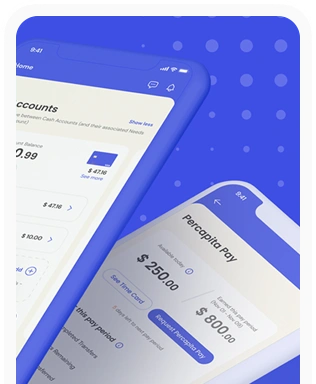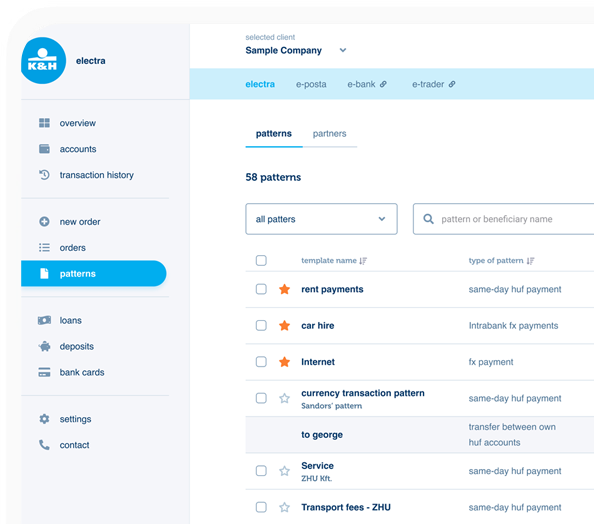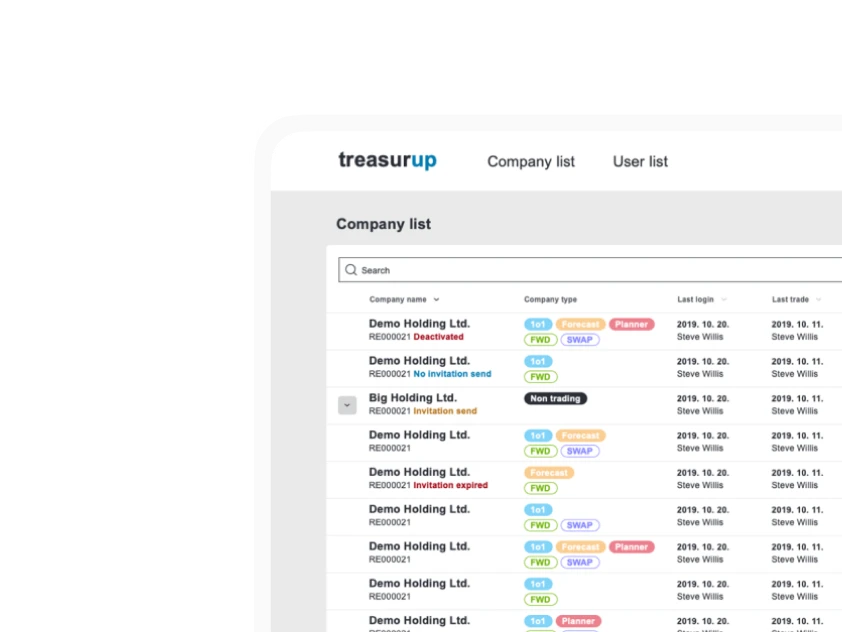Spend Smarter with AI: A New Era of Financial Health
We make roughly 100 financial decisions a day, from our morning coffee (an instant at home, or a Starbucks on the go?) to an evening movie (a cinema ticket with a large popcorn combo, or at home for free?). The majority of these small choices are impulsive and don’t support our financial goals. Moreover, banking services often add to this confusion instead of creating order. But what if we used AI to act as a personal financial trainer to help us improve our financial health?
I recently had the opportunity to speak at a Service Design Day conference about a topic that I'm increasingly focused on: how artificial intelligence can help us better manage our money. The goal of the presentation was not to show how we can become richer with AI – it's not about earning more money. Rather, it's about how we can better manage the money we already make, in one way or another, by involving an intelligent, digital assistant. The focus, therefore, is on financial health, a state that surprisingly few people achieve.
Financial Health: Not Wealth, but a Lack of Stress
Most of us could be better at handling money – this isn't a criticism, but a statement of fact. For instance, according to a 2023 survey by the Financial Health Network, only 30% of American adults consider themselves financially healthy. The majority, 54%, are just coping or getting by, and 17% are in a particularly vulnerable situation. Although this is US data, the situation is likely not much better in other parts of the world. But what does it mean to be financially healthy? It doesn't mean being rich. It means that our finances are stress free; we are able to cover our expenses, we are prepared for surprises, and we have a realistic chance of achieving our long-term goals.
To achieve this, we have to make countless decisions every day. Research highlights this cognitive load: we make thousands of conscious and subconscious decisions daily. For example, a well-known study from Cornell University found that an average person makes over 200 decisions about food alone each day. Although there is no precise data for financial decisions, it is a reasonable estimate that about 100 of our daily choices can be considered financial. This doesn't just mean direct purchases, but also small things like making a sandwich at home or buying one on the go. These 100 daily decisions, mostly under-informed and made in the wrong context, can collectively be called the enemy of our financial health.
The Root of the Problem: Why Don't We Use the Help Banks Offer?
The paradox is that, in theory, banks offer a multitude of services to help us better manage our money. In reality, however, most of us don't use them. According to a UXDA study, 70% of customers use only 2‒4 banking services regularly. Typically, we use the ones we critically need: a current account and a bank card. We don't look into how we could improve our financial health; we just use the tools we simply can't avoid.
Why is this the case? The answer, most of the time, lies in a poor user experience (UX).
- Too complicated, too overwhelming: Banking interfaces and product descriptions are often full of financial jargon that an average person doesn't understand. Most people are already lost when it comes to the difference between APR and the interest rate. The countless, non-transparent options cause cognitive overload, which leads to decision paralysis.
- Poor UX: Interfaces are put together with a financial mindset, not a human one. The question isn't "Why is this good for John Doe?", but "How is this service functional?" The result is often a cold, hard-to-use interface where a simple operation is a challenge, ending with a PDF download or a suggestion to visit a bank branch.
- Lack of trust: Complicated processes and incomprehensible communication lead to a loss of trust. If a user is afraid of making a mistake, they would rather not try out new features or services.
AI as a Personal Financial Trainer
 An AI assistant not only analyzes data but acts as a kind of personal financial trainer
An AI assistant not only analyzes data but acts as a kind of personal financial trainerHow could AI help with this? My vision is of an AI assistant that not only analyzes data but acts as a kind of personal financial trainer. Let's imagine our financial life as a large, chaotic map, full of smaller and larger decision points. Our goals (e.g., buying a new car) are on one side of the map, and we are on the other. Without help, we wander around this map, and often, due to a bad decision (too much spending in restaurants or impulse purchases), we stray from the right path and eventually give up. We don't see the connection between our small daily decisions and our long-term goals.
The services offered by banks (savings accounts, investment opportunities, etc.) are small, useful oases on this map, but since we don't know about them and don't know how to get to them, we simply don't use them. This is where AI comes in. A personal financial trainer would be able to plot an optimal route for us on this map, a pattern of financial behavior. This route is not only the shortest path to our goal, but it also organically connects the banking services that might come in handy in a given life situation.
This is not about the AI blocking bad decisions – like an annoying parental control app that we just disable after a while – but about providing information and offering alternatives. For example, if it sees that we've spent a lot in restaurants in a given month, it could signal: "If you continue like this, the car purchase will happen four months later. But if you want to eat out a lot next week too, that's fine, just postpone buying the new lawnmower." The decision remains ours, but now we make it in possession of information.
How Would This Work in Practice? Concrete AI Features
 AI would allow the user to formulate human, real-life goals
AI would allow the user to formulate human, real-life goalsThis vision is not science fiction. Let's look at some concrete features that are already feasible today and could form the basis of such a personal financial trainer.
- Control stays with the user: First and foremost, it is essential that the user can decide to what extent they let AI into their lives. It must be clearly adjustable what data the AI can access and what it can do with it. Someone might only want statistics but not predictions because they don't trust them. Building trust begins with ensuring user control.
- Goal-based planning: Instead of having to choose between abstract financial products, AI would allow the user to formulate human, real-life goals: "In the short term, I want a used car," "in the medium term, a baby is coming," "and in the long term, I want to become a financially relaxed senior citizen." The user could then also talk to the AI about these goals, fine-tuning the details, which allows for much more accurate planning.
- Market context and forecasting: If the user provides their profession and the type of their company (e.g., the owner of a private daycare), the AI can compare their performance to the market average based on anonymized data. Moreover, it can predict market events that will affect their revenue. For example, it could warn a daycare owner: "Watch out, the back-to-school rush is coming in September, which could mean a 15% increase in revenue, but you can expect a 24% drop in December due to the Christmas holidays." This information is worth gold when planning.
- Behavioral feedback: The AI can gently, without judgment, signal behavioral patterns that affect the user’s financial health. "I noticed that you spent 64% more in restaurants this month than last." It doesn't tell the user what to do, it merely informs them. If the user clicks on it, it can show the potential consequence, like the car purchase example earlier.
Beyond the Hype: The Real Evolution of AI
It's important to see that the evolution of AI is exponential, so reality will surpass these ideas in a matter of moments. In his widely discussed essay, Situational Awareness, Leopold Aschenbrenner, a former OpenAI researcher, shows the pace at which AI capabilities are growing. We have already moved beyond simple chatbots and are heading toward the era of agentic AI, where AI not only talks but also acts independently to achieve our goals.
This concept of a digital workforce will truly reshape services. At the same time, content generated by AI is often superficial and soulless. The real value is not in beautifully crafted sentences, but in the background data analysis, pattern recognition, and logical conclusions.
Business Value and the Human Goal
 The bank can increase customer engagement and the number of services used
The bank can increase customer engagement and the number of services usedSuch an intelligent system that supports financial health is beneficial for everyone. It’s beneficial for the user, because technology can take the daily burden of financial decisions off their shoulders. With personalized guidance, money – which was previously a source of stress and uncertainty – is transformed into an understandable and manageable tool. This way, they can make decisions with less stress and better information, and reach their goals faster. And the feeling of success encourages them to set new goals, starting a positive, self-perpetuating process.
And it is precisely this liberated user, moving confidently toward their goals, who represents the greatest business value for banks as well. With such a system, a bank can:
- Offer its services organically and in context. It doesn't try to sell with a cold call or an irrelevant ad, but provides help exactly when and where the customer needs it.
- Build deep trust and loyalty. The bank transforms from a passive service provider into a proactive, indispensable financial partner.
- Increase customer engagement and the number of services used, which in the long run results in higher customer lifetime value (CLV).
AI is therefore not just a tool for increasing efficiency, but an opportunity to fundamentally change our relationship with money. The success of future banking services may depend on whether they are able to put technology at the service of human well-being and financial health. Those banks that recognize that their most valuable product is their customers’ financial peace of mind, and rely on the most modern technology to achieve this, are surely heading in the right direction.









